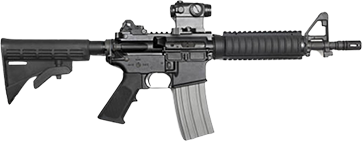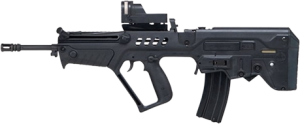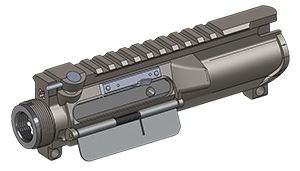3 SECOND EJECTION SIDE SELECTION
- Selectable Extractor Action – the addition of only 4 moving parts for reliable select-fire performance
- Ejection Side Selection at the flip of a switch with the bolt in battery
- Self-locking Ejection Port Covers
- Side Ejection Reliability
- Chamber Visibility and Manual Arms Continuity
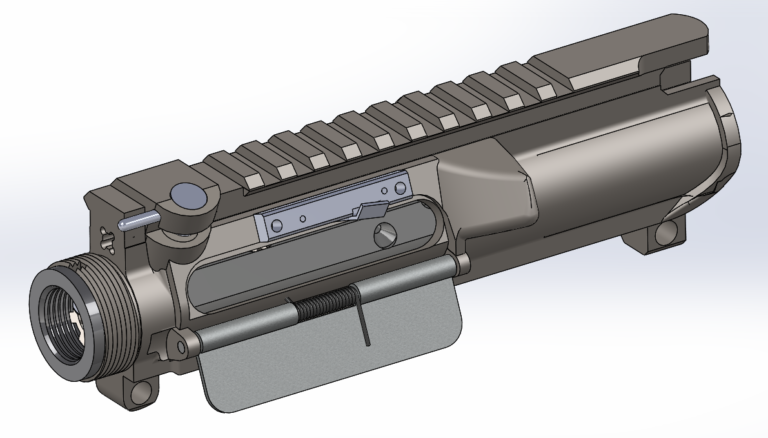

HOW IT WORKS


IN BATTERY CONVERSION
Upon bolt lockup, the Extractor Selector Assembly lines up with the Switch Key enabling rapid ejection side selection
The spring-loaded Switch is depressed, coupling it to the bolt's Extractor Selector Cam, which rotate together 180° to disengage one or the other extractor
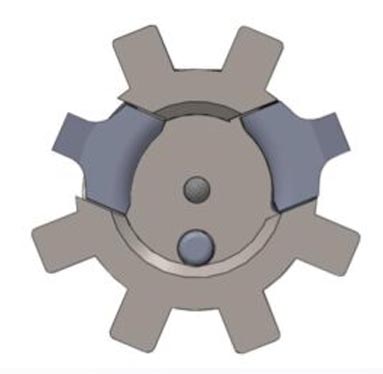

SELECTABLE EXTRACTORS
The Extractor Selector Assembly rotates 180° between two extractor disengaging positions; pictured above is the left side extractor disengaged
TAS Ejector Springs are longer and more powerful to account for their offset angular relationship (see FAMAS bolt below)
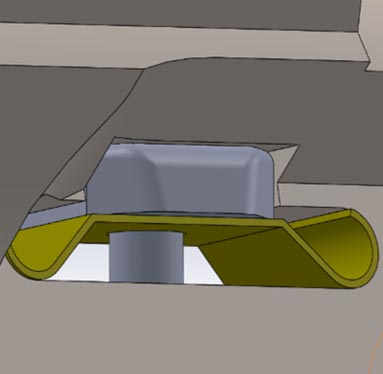

EXTRACTOR SELECTOR CAM
By upwards pressure, the Selector Cam's protrusion side disengages the selected extractor as it locks into its recess
To disengage an extractor, the Selector Cam overcomes the extractor's radially inward bias via mechanical advantage
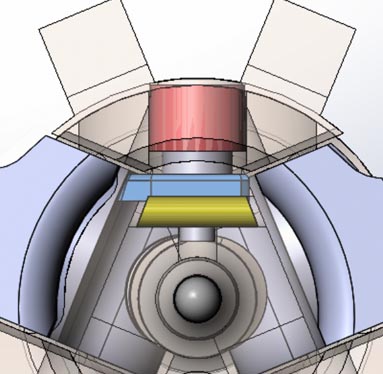

THE
FLAT SPRING
The Flat Spring force is multiplied up to 8 times through 2 forms of mechanical advantage
The Flat Spring curls into its recess upon compression, greatly increasing it's spring force
TACTICAL EJECTION SELECTION BENEFITS
1. Tactical weak hand shooting improves cover and concealment for operators at corners, doorways, gateways, and obstacles
2. 360° Security for Bullpup operators:
(a) widen fields of fire to command arcs of fire
(b) fully cover dominant hand side arc of fire during movement
(c) return fire without pivoting
(d) double fields of fire during mounted vehicle defense
3. Side ejection reliability and chamber visibility.
4. Side ejection Malfunction Diagnostics/Resolution.
5. Higher hit ratios/tighter combat groupings via a combat ready posture – with muzzles constantly trained on an assigned arc of fire, threats are neutralized more quickly and easily.
6. Avoids fatigue and Repetitive Strain Injuries (RSI) relating to constant use of dominant hand/arm.
7. Allows Injury-Induced Hand Dominance Transfer.
8. Prevents operator/team member eye injuries via directing casings and ejection materials away from faces.
9. Prevents teammate hot casing burns via directing casings in a safe direction.
10. Enables firing under obstacles without blasting up casings or debris into actions
11. Enables firing under obstacles without blasting up dust or debris into operators’ eyes


A TAS bolt is easily set to right or left hand ejection, enabling comfortable and safe weak hand operation, while reducing the requisite pivoting for operators covering (generally) right side arcs of fire. TAS Tech enables a more rapid progression to point or sight alignment, eliminating fatal delays in returning fire, while simultaneously improving cover and concealment.
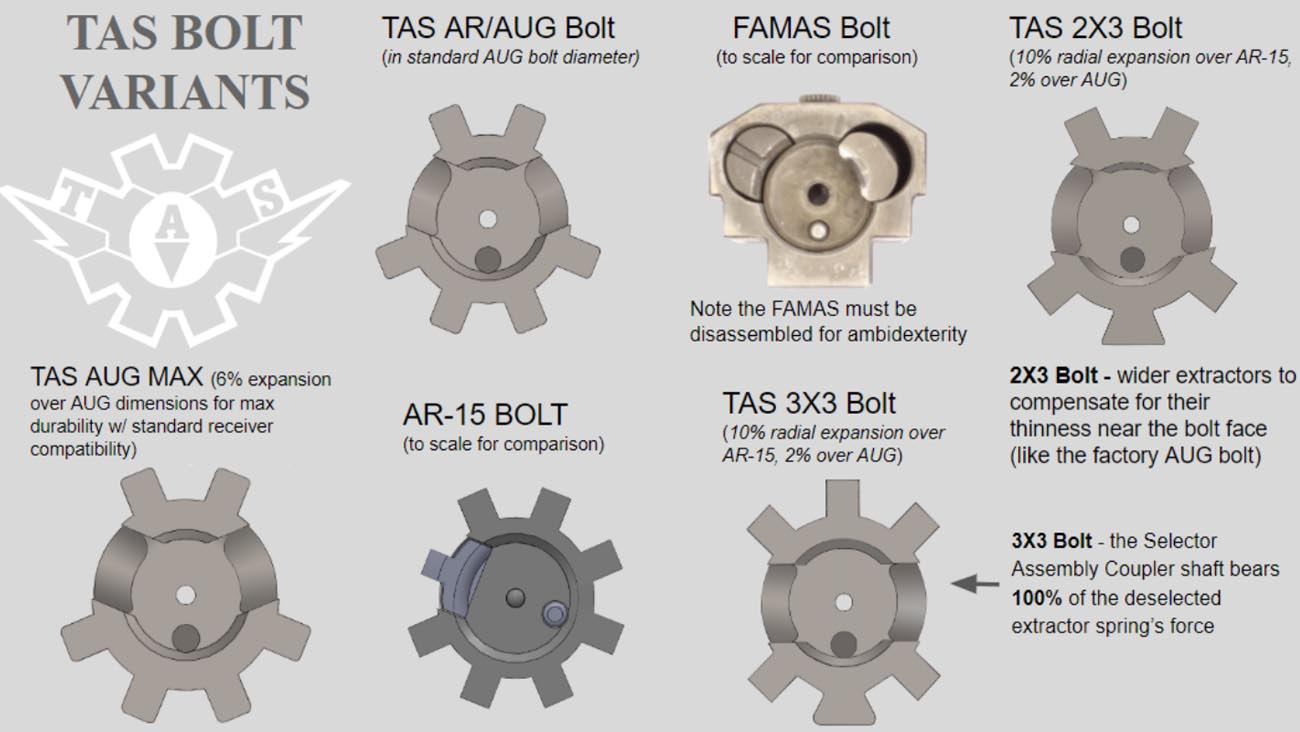

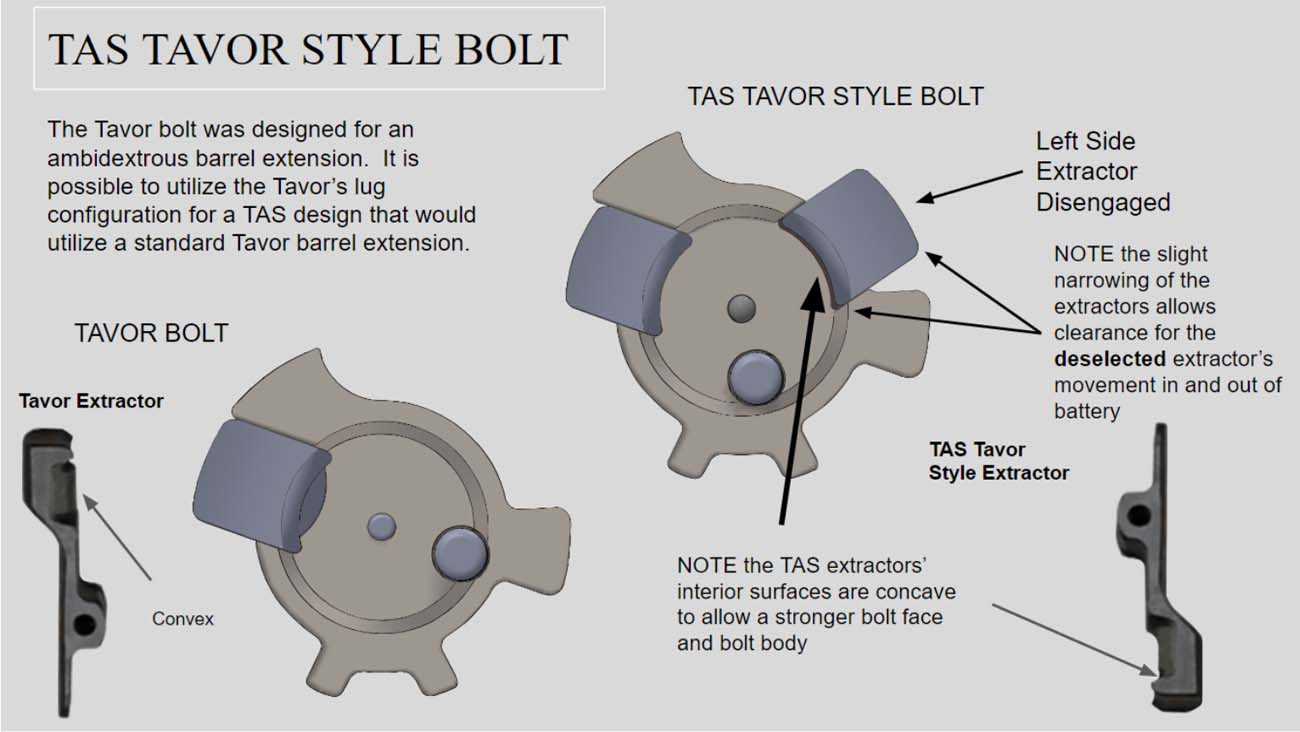

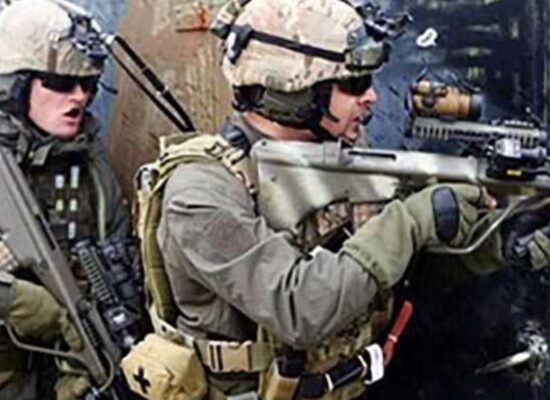

WHY CHOOSE US
CONVENTIONAL BOLT RAMIFICATIONS
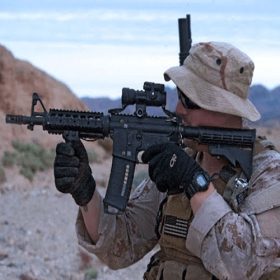

LEFT HAND OPERATION PUTS EJECTION PORTS DANGEROUSLY CLOSE TO OPERATORS' EYES
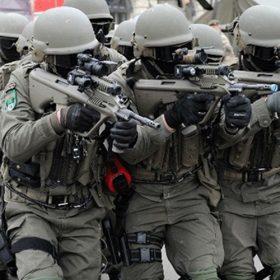

THIS PROBLEM IS AGGRAVATED BY THE COMPACT DESIGNS OF BULLPUPS
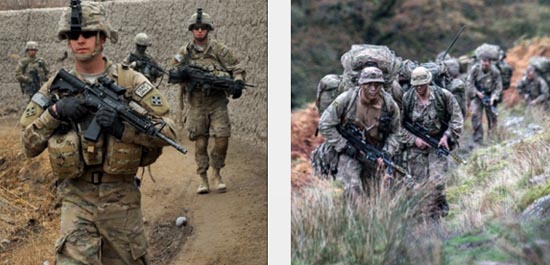

BECAUSE OF THIS EJECTA THREAT, RIGHT HAND OPERATION PREDOMINATES AND RIGHT FLANKS ARE LEFT EXPOSED, INCREASING THE PROBABILITY OF FRIENDLY CASUALTIES IN CLOSE QUARTERS COMBAT
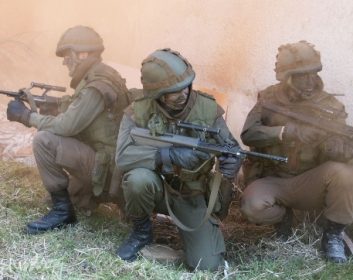

WITHOUT TACTICAL WEAK HAND DISCIPLINE SOLDIERS MUST AWKWARDLY TURN TO THE RIGHT TO FACE THREATS
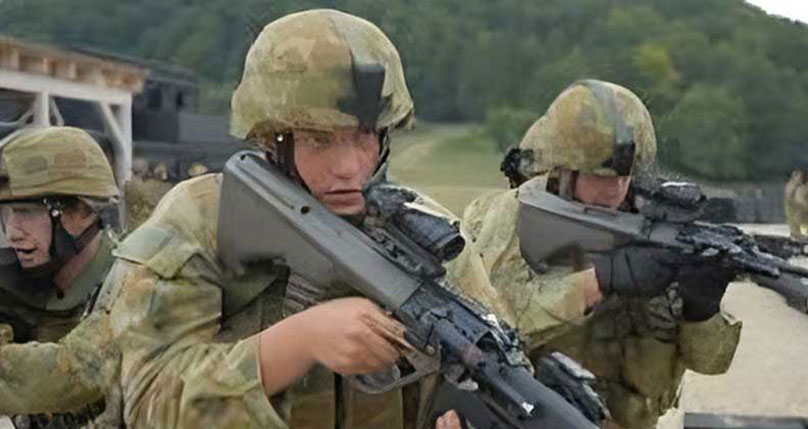

A FIRE TEAM ON THE MOVE WITH AN OPERATOR SHUFFLING SIDEWAYS TO COVER THE RIGHT ARC OF FIRE
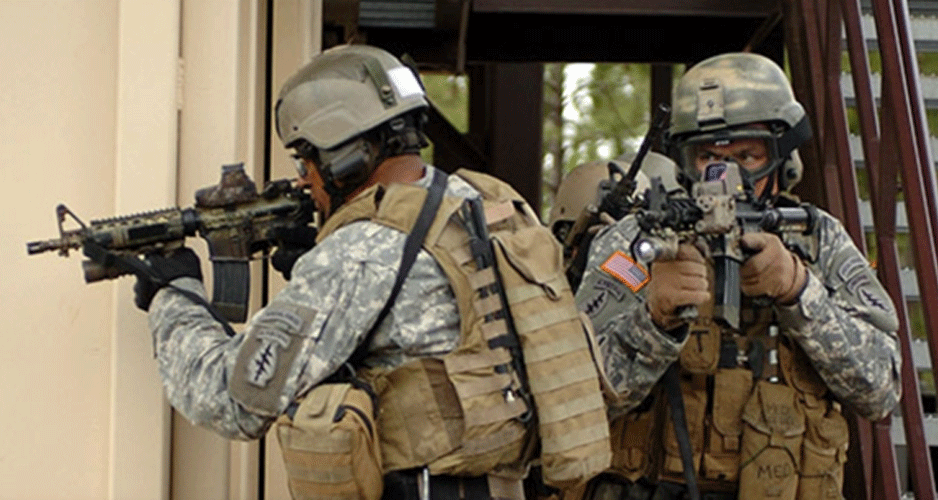

TACTICAL WEAK HAND OPERATION BEING PRACTICED BY ARMY SPECIAL FORCES FOR IMPROVED FIELDS OF FIRE AND IMPROVED COVER
NOTE THE GOGGLES REQUIRED BY THE WEAK HAND OPERATOR ON THE RIGHT
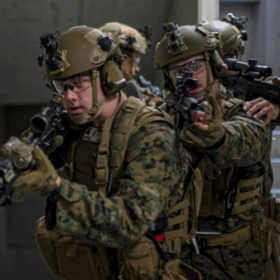

OPERATORS EJECT HOT CASINGS TOWARDS EACH OTHER AT 200-300° F (it only takes one casing caught behind a strap, vest, or collar to cause a fatal distraction)
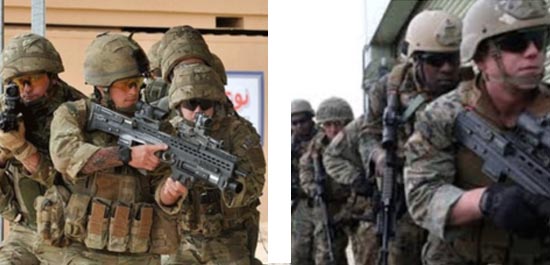

SQUADS ON THE MOVE IN CLOSE QUARTERS COMBAT, STUCK IN DOMINANT HAND OPERATION, WITHOUT A SINGLE MUZZLE COVERING THEIR RIGHT FLANK
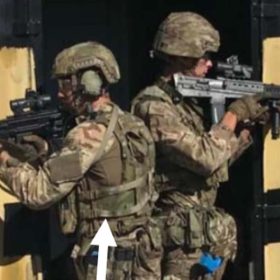

NOTE THE OPERATOR COVERING RIGHT IS FORCED TO STEP FROM BEHIND COVER, INCREASING THE ENEMY'S HIT PROBABILITY, AND THE CONSQUENCES OF HIT
